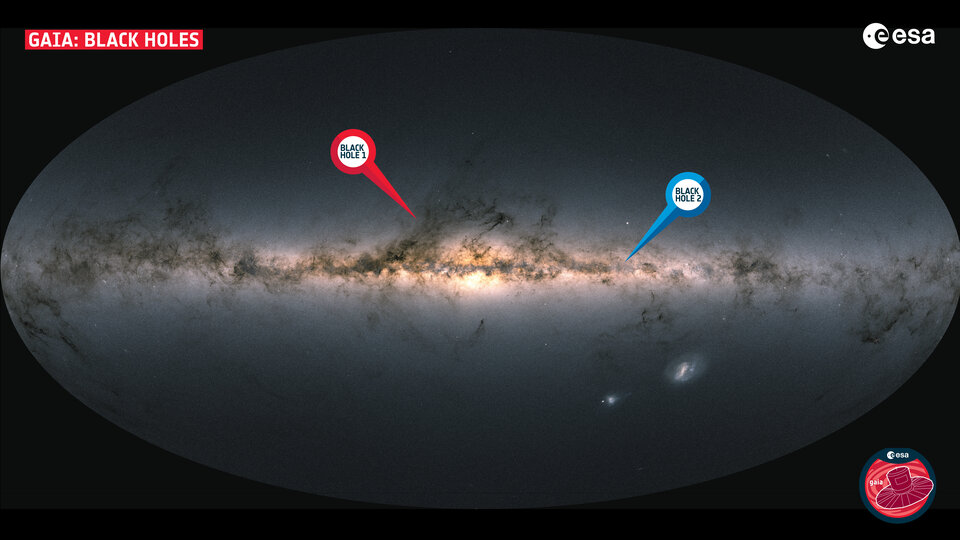The black holes, named Gaia BH1 and Gaia BH2, were discovered by the European Space Agency’s (ESA) Gaia spacecraft.
Gaia BH1 is just 1,560 light-years from Earth in the direction of the Ophiuchus constellation, while Gaia BH2 is 3,800 light-years away in the Centauri constellation. However, it is not only the proximity to our planet that makes these finds exceptional.
“What distinguishes this new group of black holes from those we already knew about is their great distance from their companion stars,” said Karim El-Badri, the leader of the research team at the Harvard-Smithsonian Center for Astrophysics in Massachusetts and the Max Institute for Astronomy. Plank in Germany.
Ordinary pairs of black holes and companion stars are called X-ray binary systems, and they are usually quite bright in X-rays and radio waves. Such systems are much easier to find than ordinary black holes. They do not absorb matter, so they do not emit powerful bursts of energy.
Gaia BH1 and Gaia BH2 are completely dark and were discovered through the gravitational pull of their companion stars.

“These black holes must have a very different formation history than X-ray binaries. We suspected that black holes might exist in wider systems, but weren’t sure how they formed. This discovery means that we have to adapt our theories about the evolution of binary star systems,” El-Badri explained.
The Gaia space telescope is ideally suited to detect such “invisible” black holes. It can accurately measure the position and motion of billions of stars in the sky, and the researchers say it can clearly indicate the gravitational influence on them from other stars, planets or black holes.
“The accuracy of the Gaia data was critical to this discovery. It was possible to detect black holes due to the barely noticeable oscillation of companion stars during rotation around them. No other instrument is capable of such measurements,” said ESA Gaia project scientist Timo Prousti.
Gaia’s observations have been confirmed by other observatories – for example, NASA’s Chandra X-ray telescope and South Africa’s MeerKAT radio telescope on Earth did not detect any visible light coming from this black hole.
“A lot of particles come from the companion star in the form of a stellar wind. But since we didn’t see any radio light, this tells us that the black hole is not too “hungry” and few particles cross its event horizon. We don’t know why, but we really want to find out,” says research team member Yvette Sandes of the Harvard-Smithsonian Center for Astrophysics.
The team will try to find more distant X-ray binaries in the next Gaia data to be released in 2025. The information will be built on 66-month observations of the space telescope.
“It appears that these black holes in wide orbits are indeed very common in space—more common than binary systems where the black hole and star are closer together. But the problem is to detect them. The good news is that Gaia is still collecting data, and their next release will contain many more of these stars with mysterious black hole companions,” concludes Sandes.
The research was published late last month in Monthly Notices of the Royal Astronomical Society.




